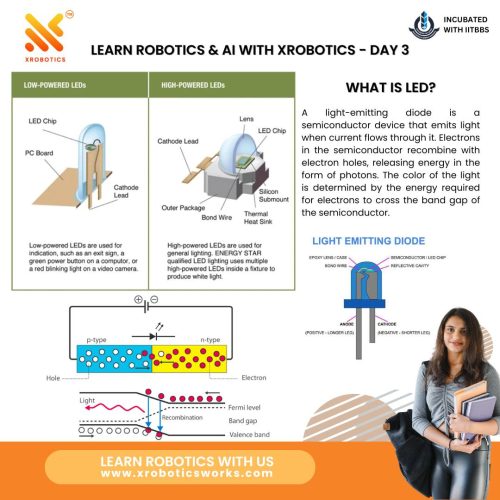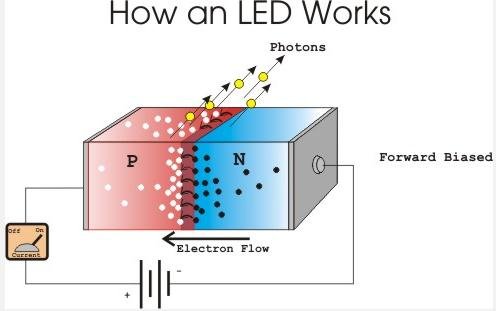Understanding LEDs: The Bright Future of Lighting and Electronics

Light Emitting Diodes, or LEDs, have revolutionized the way we light up our world. From the screens of our smartphones to the headlights of our cars, LEDs are everywhere. But what exactly are LEDs, and why are they so important? Let’s explore the world of LEDs and discover why they are the go-to choice for modern lighting and display technologies.
What is an LED?
An LED (Light Emitting Diode) is a semiconductor device that emits light when an electric current passes through it. Unlike traditional light sources, LEDs do not rely on heat to produce light, making them far more efficient. LEDs can emit light in a range of colors, depending on the materials used in their construction, and they are available in various shapes and sizes to suit different applications.
How Does an LED Work?

An LED works on a principle known as electroluminescence. When an electric current flows through the diode, electrons move across the semiconductor material. As these electrons pass from a higher energy state to a lower one, they release energy in the form of photons—the basic unit of light.
The color of the light emitted by an LED is determined by the energy gap of the materials used in the semiconductor. For example, different materials can produce red, green, blue, or even ultraviolet light. White LEDs are typically created by coating a blue LED with a phosphor material that converts some of the blue light into a broader spectrum of light, which appears white to the human eye.
Why Are LEDs Important?
LEDs are incredibly versatile and offer several advantages over traditional light sources:
Energy Efficiency: LEDs consume up to 90% less power than incandescent bulbs and around 50% less than fluorescent lights, making them an environmentally friendly option that reduces energy costs.
Long Lifespan: LEDs can last up to 25 times longer than traditional light bulbs, meaning less frequent replacements and lower maintenance costs. A typical LED can operate for 25,000 to 50,000 hours or more.
Durability: LEDs are solid-state devices, meaning they are less likely to break or shatter compared to glass bulbs. They are also resistant to shock, vibration, and extreme temperatures.
Instant Lighting: LEDs light up instantly, without the warm-up time required by fluorescent or incandescent bulbs. This makes them ideal for applications where immediate lighting is crucial, such as traffic lights or car headlights.
Versatility in Design: LEDs are compact and can be configured in various shapes and sizes, making them ideal for a wide range of applications, from tiny indicator lights in electronics to large-scale architectural lighting.
Types of LEDs

There are several types of LEDs, each designed for specific applications:
Standard LEDs: The most common type, used in indicator lights, displays, and basic lighting applications.
High-Power LEDs: Designed for applications that require higher brightness, such as street lighting, automotive lighting, and industrial settings.
RGB LEDs: These LEDs combine red, green, and blue diodes in a single package, allowing them to produce millions of colors. They are commonly used in displays, mood lighting, and decorative lighting.
Infrared LEDs: Used primarily in remote controls, security cameras, and other applications requiring invisible light.
Ultraviolet LEDs: Used for sterilization, counterfeit detection, and special-purpose lighting applications.
Practical Example: Using LEDs in Everyday Life
Consider a simple example: a flashlight. Traditional flashlights use incandescent bulbs that consume a lot of battery power and produce heat. LED flashlights, on the other hand, are far more energy-efficient and last longer. They also offer brighter light output and can be made compact and lightweight, making them perfect for outdoor activities or emergencies.
Another example is the use of LEDs in televisions and monitors. LED backlights in LCD screens provide better color contrast and brightness while consuming less power compared to older fluorescent backlights. This not only enhances the viewing experience but also reduces energy consumption, which is better for the environment.
